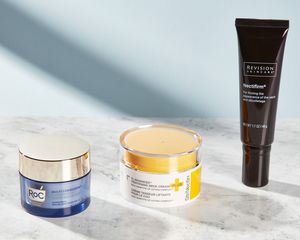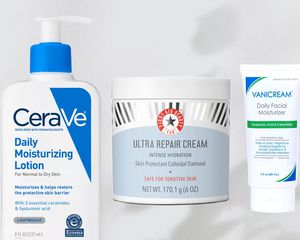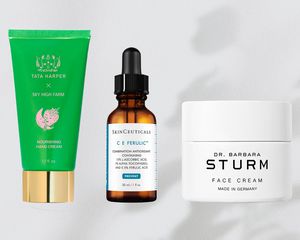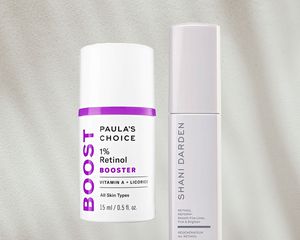:max_bytes(150000):strip_icc()/phenoxyethanol-skincare-ingredient-bc8653f5ad9647719c6e6e222abdcfa9.jpg)
JulyProkopiv/Getty Images
Phenoxyethanol might not be the most well-known preservative in skincare, but it's slowly becoming one of them. You've likely noticed the growing popularity of "paraben-free" products in recent years and if you've spent enough time looking at product labels, you might have even noticed an ingredient called phenoxyethanol included instead. And since parabens are such a highly debated topic on the internet and a questionable skincare ingredient for some, it would be understandable for you to wonder about the safety of this lesser-known preservative that's suddenly showing up in many of your products.
Meet the Expert
Gloria Lu is a skincare chemist and co-founder of Chemist Confessions.
Gervaise Gerstner, MD is New York City based board-certified dermatologist.
Heidi Waldorf, MD, of Waldorf Dermatology Aesthetics is a board-certified dermatologist.
"Phenoxyethanol is a preservative that became very popular when parabens fell from grace," chemist Gloria Lu says. "Now that phenoxyethanol is everywhere, it seems like the next prime subject to be tossed under the bus." But does it deserve to be added to our perpetually growing list of skincare ingredients to avoid? We turned to Lu as well as dermatologists Gervaise Gerstner, MD, and Heidi Waldorf, MD to shed some light on the increasingly common skincare ingredient. Keep reading to find out everything you need to know about phenoxyethanol.
Phenoxyethanol
Type of ingredient: Preservative
Main benefits: Prevents the growth of bacteria, enhances shelf life, and stabilizes products.
Who should use it: In general, anyone without an allergy. Phenoxyethanol is not recommended for those with sensitive skin or eczema.
How often can you use it: Daily.
Works well with: Other preservatives.
Don't use with: Phenoxyethanol works well with most, if not all, ingredients.
What Is Phenoxyethanol?
According to Waldorf, phenoxyethanol is an ether alcohol that is naturally derived from green tea but is usually synthesized in a lab. In cosmetics, it functions as a preservative, a solvent, and an antimicrobial ingredient. Gerstner says it comes in a colorless liquid form and is found in a wide range of cosmetics and skincare, such as cleansers, moisturizers, serums, and creams.
Benefits of Phenoxyethanol for Skin
Phenoxyethanol is not used for its effects on the skin but rather is included in skincare products as a preservative against bacterial contamination.
- Prevents bacteria: It's antimicrobial and highly effective in preventing the growth of fungi, bacteria, and yeast in a product formula.
- Prolongs product shelf life: The use of preservatives enhances the safety of products and prolongs the period of which a product can be stored.
- Is stable: Gerstner says phenoxyethanol helps with product stability because it doesn't react with other ingredients, air, or light.
- Has versatile use: According to Gerstner, it's effective at protecting against pathogens in a wide variety of products.
Side Effects of Phenoxyethanol
Ingestion of phenoxyethanol can be toxic for infants by suppressing the central nervous system, so Waldorf recommends avoiding the use of products containing the preservative on infants. For adults, the possible side effects of topical application are far less severe, despite some misleading information you might find on the internet. "Scary health issue claims are a huge stretch, but phenoxyethanol can be an irritant for some—really that goes for most preservatives," Lu says.
While rare, Waldorf adds that phenoxyethanol can cause skin irritation and allergic reactions in predisposed individuals. "If you have a tendency toward eczema or sensitive skin, either avoid products containing it or do a self patch test first," she says. To test for a reaction, Waldorf suggests rubbing a small amount of the product containing phenoxyethanol to the same spot on your upper arm twice a day for three days, taking note of how your body responds. If you notice a reaction, discontinue use of the product and consult your dermatologist.
How to Use It
If you do not have an allergy to the ingredient, Gerstner says phenoxyethanol can be used daily in various products. Because the ingredient is included in such a vast array of skincare products, the time of day you would apply it, as well as the step in your routine, depends on the product in question.



